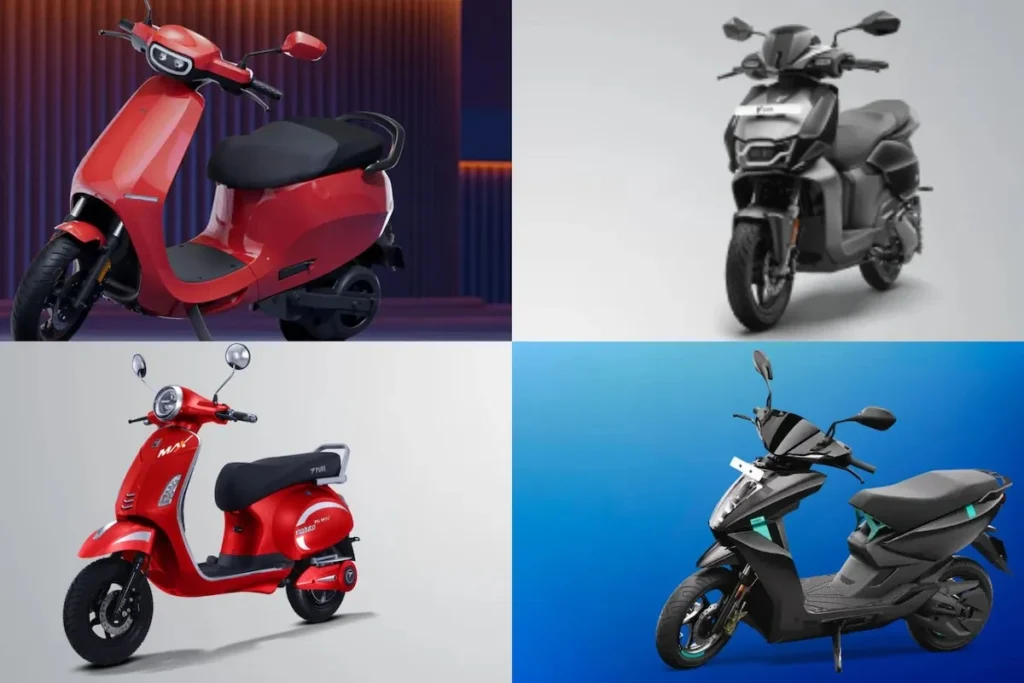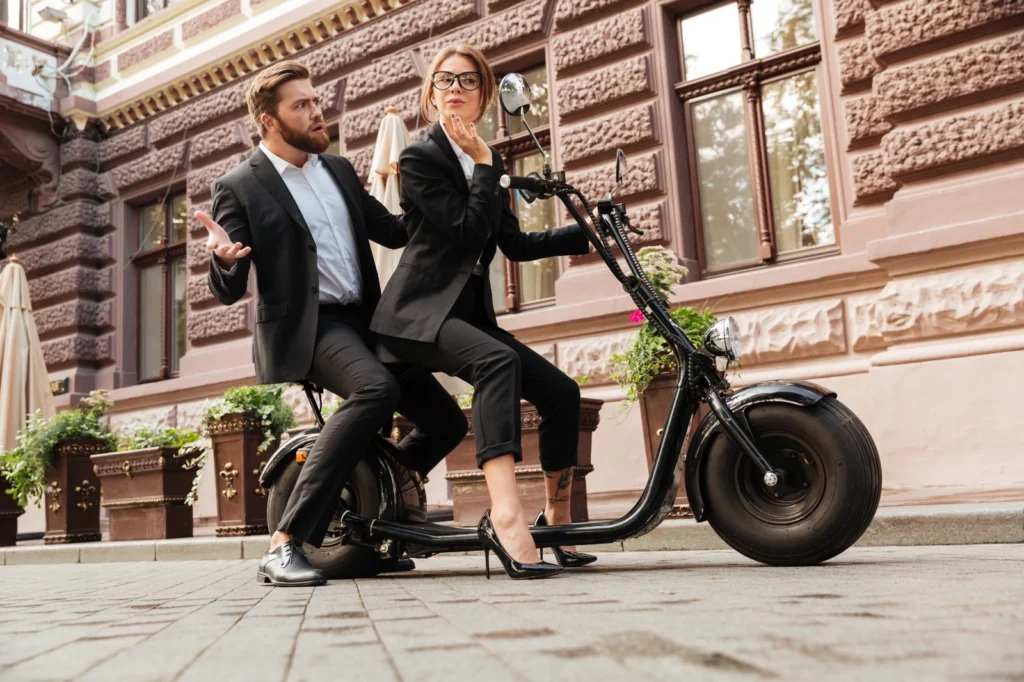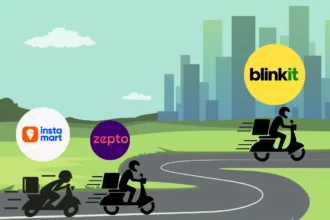Estimated Reading Time: 18-22 minutes (3,692 words)
Introduction
The shift to electric two-wheelers isn’t just about being green — it’s increasingly about saving money, reducing daily commute stress, and future-proofing your ride. In 2025, Indian consumers are more EV-aware than ever. With petrol prices hovering between ₹100–₹110 per litre in major cities, owning a petrol scooter can cost upwards of ₹2,500–₹3,000 per month in fuel alone. Electric scooters slash that expense by nearly 90%, making them a financially smarter option for students, office commuters, gig workers, and even small businesses. Add to that stricter emission norms, rising urban congestion, and government-backed incentives — and the popularity of affordable EV scooters becomes almost inevitable.
At the same time, EV technology itself has matured. Today’s budget-friendly electric scooters under or around ₹1 lakh come with features that were once limited to premium models — detachable batteries, fast charging, 100+ km real-world range, regenerative braking, AI-based diagnostics, and improved motor efficiency. Brands like Ola, Ather, TVS, Hero, and Ampere are now competing aggressively in the entry-level segment, which means buyers get better build quality, safer battery management systems, and lower maintenance costs. India’s expanding charging network (now crossing 12,000+ public chargers) and growing adoption in Tier-2/Tier-3 cities are making EVs more practical for everyday use.
In this comprehensive guide, we’ll walk you through the best affordable electric scooters in 2025 — globally and India-first — with a special focus on models priced at or near ₹1 lakh. You’ll get detailed spec sheets, real-world pros and cons, ownership cost comparisons, and insights into which scooter fits which type of rider. Whether you’re a first-time EV buyer, a daily commuter looking to cut fuel costs, or someone exploring a second economical ride for the household, this post will help you make a confident, value-driven decision.

Why Affordable Electric Scooters Matter in 2025
Cost of ownership is changing
EV scooters are drastically cheaper to run than petrol two-wheelers — and that’s a huge deal in 2025. With petrol hovering around ₹100–₹110 per litre in many Indian cities, daily commuting has become expensive. In contrast, electric scooters cost as little as 15–20 paise per km, making even entry-level EVs with modest range incredibly cost-effective. Over a year, riders can save ₹20,000–₹35,000 just on fuel. Factor in lower maintenance (no oil changes, no engine parts), and the lifetime ownership cost becomes even more attractive.
Growing policy support and infrastructure
India’s EV ecosystem is scaling fast. With GST at only 5%, state subsidies, and easier financing options, electric scooters are becoming more accessible for first-time buyers. The country is also building a stronger charging network — both public and society-level chargers. As a result, adoption has surged: electric two-wheeler sales crossed 1.2 million units in FY 2024–25 (Financial Times). This momentum signals growing trust, better infrastructure, and a clear shift toward sustainable mobility.
Volume market expansion
Manufacturers now see affordable EVs as the biggest growth opportunity. As companies scale production, localize key components, and optimize battery supply chains, the cost of manufacturing falls — creating more budget-friendly variants for the mass market. In 2025, brands like Ola, TVS, Bajaj, Hero, and Ather are aggressively targeting the sub-₹1 lakh segment, increasing options for buyers and expanding market penetration across India’s Tier-2 and Tier-3 regions.
Use-case alignment
Not every rider needs a high-speed, premium electric scooter. Many buyers simply want a dependable commuter for city rides, office travel, short errands, last-mile mobility, and delivery jobs. Affordable EVs excel in exactly these scenarios. They offer practical range, simple controls, low running costs, and easy charging — making them ideal for daily urban use. For a majority of Indians, these scooters hit the sweet spot between price, performance, and practicality.
Key Buying Criteria for Budget EV Scooters
When choosing an affordable EV scooter, it’s crucial to look beyond flashy features and focus on what truly impacts daily usage and long-term value. Here’s what to evaluate:
Real-world range vs. claimed range
Brand brochures often highlight ideal test-cycle range, which may not reflect real-life conditions. Factors like traffic, rider weight, terrain, and riding mode can reduce range by 20–35%. Always check real-world user reviews and city-test data. A reliable budget scooter should offer at least 65–90 km real-world range for daily commuting without mid-day charging stress.
Battery type and charging model
You’ll usually find two options:
- Fixed batteries — safer, more stable, but require proximity to a charging point. Best for home and office charging.
- Swappable batteries — convenient for delivery riders or apartment dwellers with no charging access.
Also evaluate: - Battery chemistry (most affordable scooters use LFP or NMC cells)
- Life cycle (500–1,500 cycles)
- Replacement cost (₹20,000–₹45,000 depending on capacity)
Some brands offer battery subscriptions — cheaper upfront but recurring costs. Choose based on how frequently you ride.
Top speed and motor power
If your commute is purely urban, a top speed of 45–60 km/h is adequate. For mixed or short highway stretches, look for scooters offering 70 km/h+ and motors rated at 2 kW and above. Higher torque helps with inclines and quick overtakes — important in Indian traffic.
Build quality & service network
Budget doesn’t mean compromise. Look for:
- Strong chassis and durable plastics
- Reliable braking system (preferably disc brakes)
- IP-rated battery and motor (IP67/IP65)
- Wide service center network (minimum 30–50 touchpoints for trust)
Check customer complaints on social platforms to avoid frequent breakdown-prone brands.
Warranty coverage
This is where brands show confidence in their product. Key areas:
- Battery warranty should be at least 3 years or 30,000 km
- Motor and controller warranty should be 3–5 years
- Extended warranty options indicate better long-term reliability
A strong warranty drastically reduces long-term maintenance expenses.
Charging infrastructure availability
Before buying, evaluate:
- Whether your apartment allows home charging
- If your employer provides charging
- Distance to nearest public charging station
- Access to brand-specific networks like Ola Hypercharger or Bounce Swap
A scooter is only as useful as your ability to charge it conveniently.
Total Cost of Ownership (TCO)
Look at the full financial picture, not just the on-road price. Include:
- Charging cost per month (usually ₹150–₹300)
- Annual service costs (often under ₹1,000)
- Battery replacement after 4–6 years
Insurance premiums
Compare this with petrol scooters, where annual running can exceed ₹25,000–₹40,000. A good EV often recovers its price difference within 18–30 months.
Top Affordable Electric Scooters in 2025
Here are some of the best affordable electric scooters available (or expected) in 2025, especially in India, with detailed specs, pros, and trade-offs.
| Model | Price (Approx / Ex-showroom) | Range (Claimed / Real-World) | Key Features | Pros | Trade-offs |
| Ola S1 X | ~₹ 69,999 (base) | ~95 km (2 kWh) / ~125 km (3 kWh) | Multiple riding modes (Eco/Normal/Sport), reverse assist, app connectivity, large boot space, 34L storage, LED lighting | One of the lowest-priced EV scooters in the segment, strong feature set for the money, smooth ride quality, frequent OTA updates, highly accessible service network | Base variant has smaller battery; charging time is longer; performance drops in Eco mode; software can feel slightly heavy on lower variants |
| Bounce Infinity E1+ | ₹ 89,999 | ~70–85 km real-world | Battery-swapping capability, reverse mode, smart diagnostics app, lightweight design, removable battery option | Battery-as-a-Service helps reduce upfront cost; ability to swap instead of charge is great for apartments; low running cost; easy portability of battery | Swap network availability varies widely by city; smaller battery limits long rides; build quality is good but not premium |
| TVS iQube (2.2 kWh variant) | ~₹ 92,989 (often under ₹1 lakh after state subsidies) | ~75–85 km | Smart connectivity, 5-inch display, reliable braking, strong brand-backed service network, good refinement | Extremely reliable, smooth ride quality, consistent real-world performance, excellent after-sales support from TVS | Smaller battery means shorter range vs higher iQube variants; basic features compared to rivals (no sporty performance) |
| Ather Rizta Lite / Rizta S | ~₹ 94,500 (Lite) / ~₹ 99,999 (S) | ~125 km (real-world for Lite) | TFT display, OTA software updates, excellent app support, largest seat in segment, Ather stacking tech for better efficiency | Best-in-class software + customer support, wide and comfortable seat, great real-world range, durable build quality | A bit expensive for the “budget” segment; no swappable battery; fast charging available but at extra cost |
| Ampere Magnus EX / Magnus Neo | ₹ 84,900 (EX) / ₹ 79,999 (Neo) | ~120 km (EX) / 100+ km (Neo) | Removable battery, reverse mode, simple digital console, upright commuter-friendly ergonomics | Very low maintenance cost, uses LFP batteries (safer + long life), strong affordability, comfortable for pillion riders | Lower top speed (50–55 km/h), basic dashboard, not ideal for highways or long trips |
| Hero Vida V1 / Vida VX2 | ~₹ 85,000 for VX2 Go (promo price) | ~110 km (Vida) | Battery-swapping in some variants, Hero extensive dealership network, modular battery design, strong build | Most trusted brand in India, great resale value, reliable service network, flexible battery options depending on budget | Base version may lack top-tier features like TFT screens or fast charging; fewer software-driven extras than Ola/Ather |
Note: Prices are approximate ex-showroom and may vary by city, variant, subsidy, and demand. Real-world range depends heavily on riding mode, terrain, passenger weight, and weather.
Real-World Cost: Running, Charging & Maintenance
Running cost per km:
Electric scooters are incredibly economical. Most affordable EVs cost ~15–20 paise per km, depending on your local electricity tariff (typically ₹6–₹9 per unit) and battery efficiency. Even if you ride daily, your monthly “fuel” expense often stays under ₹150–₹250, compared to ₹1,000–₹2,000+ with petrol scooters. This makes EVs especially attractive for office commuters, delivery riders, students, and anyone who logs a lot of city kilometers.
Charging vs swapping:
- Fixed-battery scooters (Ola S1 X, TVS iQube, Ather Rizta, Ampere, etc.) require home or workplace charging. Your cost depends on:
- your home electricity rate
- charging efficiency (usually 85–92%)
- how often you do full vs partial charges
- peak-hour vs off-peak rates (if applicable)
These scooters are ideal if you have a dedicated parking spot or socket.
- your home electricity rate
- Swappable-battery scooters (Bounce Infinity, Hero Vida in some variants) work differently. Rather than waiting to charge, you swap batteries at partner stations, which takes <2 minutes.
Costs depend on:
- subscription plan
- per-swap fee
- the density of swap stations in your area
- how frequently you ride
Swapping is great for apartment residents or riders who don’t have convenient home charging access.
- subscription plan
Maintenance savings:
EV scooters reduce the cost and complexity of maintenance because there are far fewer moving parts than petrol scooters. You avoid:
- engine oil changes
- spark plugs
- air filters
- clutch assemblies
- fuel pump or carburettor cleaning
- belt/chain replacements in many cases
Most EV maintenance revolves around:
- brake pads
- tyres
- basic software or wiring checks
- occasional suspension servicing
Affordable EVs benefit the most, as they often use LFP batteries and simpler drivetrains that require fewer service visits. Expect yearly maintenance costs to be 40–60% cheaper than petrol models.

Battery degradation & replacement:
All lithium batteries degrade over time, especially with frequent full-to-zero cycles. Most budget EV scooter batteries retain 70–80% capacity after 3–5 years depending on:
- charging habits
- riding style
- climate conditions
- battery type (LFP batteries degrade more slowly than NMC)
When buying a budget EV, check:
- Battery warranty: typically 3 years / 30,000–50,000 km
- Motor warranty: usually 3–5 years
- Replacement battery cost: can range from ₹18,000 (small 1.5 kWh) to ₹35,000–₹45,000 (2–3 kWh packs)
A good warranty can save you tens of thousands of rupees later, especially if you plan to use the scooter for daily heavy commuting.
Pros & Trade-offs of Choosing a Budget EV Scooter
Pros:
Much lower upfront cost than premium EV scooters
Budget-friendly models under ₹1 lakh make it easier for everyday riders, students, gig workers, and families to enter the EV ecosystem without the financial burden of premium brands. Many affordable scooters now offer features that used to be exclusive to high-end models.
Significantly cheaper running cost vs ICE two-wheelers
Electric scooters offer incredible savings — often ₹15,000–₹25,000 per year in fuel costs alone. Combined with lower maintenance expenses, the total cost of ownership becomes one of the biggest reasons buyers choose budget EVs.
Access to eco-friendly commuting without breaking the bank
Even entry-level EVs drastically reduce emissions and noise pollution. You get a clean, silent, and smooth ride while contributing meaningfully to greener urban mobility. This is especially appealing in traffic-heavy Indian metro and tier-2 cities.
Ideal for city use, short commutes, and first-time EV buyers
Most affordable EVs are optimized for 30–50 km/day city use — perfect for office commutes, errands, grocery runs, or college trips. Their predictable range and simple charging routines make them a great starting point for those new to electric vehicles.
Some models support battery swap → no long charger wait
Scooters like Bounce Infinity or select Hero Vida variants come with battery-swapping capability, making it possible to “refuel” instantly. This is a big plus for apartment dwellers, delivery riders, or anyone without a dedicated home charging point.
Trade-offs:
Range may be limited compared to higher-end EVs
Budget EVs often come with smaller 1.5–2.5 kWh battery packs. While perfectly adequate for city use, they may not suit riders who regularly undertake long-distance trips or have unpredictable daily travel patterns.
Charging infrastructure may still be a bottleneck in some cities
Although the network is expanding quickly, not every Indian city has reliable public charging or swap stations. Riders in tier-2 and tier-3 towns may still depend heavily on home charging.
Lower-spec variants may have fewer smart features / connectivity
To keep prices low, manufacturers sometimes skip premium features like:
- touchscreen dashboards
- fast charging
- navigation
- ride analytics
- high-end build materials
Basic variants often focus on functionality rather than advanced tech.
Swappable battery models depend on the network of stations
While swapping is convenient, it works only if stations are accessible where you live or work. In cities where the network is still developing, convenience may vary significantly.
Resale value uncertain (especially for newer or less-known brands)
EV resale value is still evolving, particularly for budget models and newer startups. Battery health plays a major role, and buyers may hesitate if the brand has limited market presence or service reach.
How to Choose the Right Scooter for Your Use Case
Choosing the right affordable electric scooter depends heavily on how you ride, where you live, and what you value—range, speed, comfort, features, or convenience. Use this expanded decision guide to match your lifestyle with the right EV option.
Daily commuter in the city (10–50 km/day):
What to choose:
- Look for fixed-battery scooters with ~75–120 km real-world range, ensuring comfortable daily usage without charging anxiety.
- Prioritize brands with widespread service networks, so routine maintenance is easy and downtime is minimal.
- Compare charging time — 3–5 hours is ideal if you charge overnight.
- Check battery warranty (minimum 3 years; 30,000–40,000 km coverage preferred).
- Choose models with features like:
- good boot space
- combined braking system
- eco/normal/power modes
- regenerative braking
- good boot space
Why:
You need reliability, comfort, and predictable performance for everyday city travel.
Apartment dweller without a dedicated charger:
What to choose:
- Consider swappable-battery models (Bounce Infinity, Hero Vida) so you can “refuel” instantly without waiting for a charge.
- Evaluate whether the manufacturer’s swap network covers your locality, office route, and common commute zones.
- Check the subscription cost (Battery-as-a-Service) vs buying the battery outright — sometimes the monthly swap plan is cheaper.
- Ensure the battery is light enough to remove if you intend to charge it inside your home.
- Look for 2–3 swap stations within 3–5 km radius for maximum convenience.
Why:
You avoid building-society restrictions, parking issues, or wiring complications — a huge benefit for city residents.
Fleet / delivery rider (Zomato, Swiggy, Amazon, Dunzo, Blinkit):
What to choose:
- Range + uptime is everything — pick either:
- a higher-range fixed battery scooter (100–150 km realistic)
- or a swappable battery model to minimize idle time
- a higher-range fixed battery scooter (100–150 km realistic)
- Choose models with sturdy suspension and durable tyres (daily rough usage).
- Compare the real TCO (Total Cost of Ownership):
- electricity or swap subscription
- maintenance
- brake pads, tyres, consumables
- battery life over 2–3 years
- electricity or swap subscription
- Seek scooters with strong cargo-friendly features:
- flat footboard
- large boot
- mobile charging port
- GPS tracking (if used for fleet)
- flat footboard
- Look for extended warranties, as high mileage accelerates wear.
Why:
For delivery riders, every hour saved = more earnings. EVs significantly reduce running costs.
First-time EV buyer:
What to choose:
- Start with trusted brands:
- Hero, TVS, Ather, Bajaj, Ola (recent models), Ampere
- Hero, TVS, Ather, Bajaj, Ola (recent models), Ampere
- Check if your city has a nearby dealer + service center, not just a showroom.
- Look for balanced scooters that offer:
- range of 80–120 km
- basic smart features (app lock, ride stats)
- good build quality
- simple maintenance experience
- range of 80–120 km
- Take a long test ride — check acceleration, braking, handling, dashboard visibility, and comfort.
- Don’t skip reading battery warranty terms and charger replacement costs.
Why:
First-time buyers need simplicity, reliability, and peace of mind — brands with proven service support offer that.
FAQs Section
1. Are EV scooters under ₹1 lakh really reliable?
Yes — many sub-₹1 lakh electric scooters today are made by established brands like TVS, Hero, Ampere, Ola, and Ather, which have significantly improved their manufacturing quality and battery safety. Budget models may have smaller battery packs or fewer smart features, but for daily city riding, they offer strong reliability. Always check:
- Battery warranty (3–5 years is ideal)
- Motor warranty
- Service network availability
- User reviews in your city
A well-maintained budget EV can last 5–7 years easily.
2. Is the “range” claimed by manufacturers realistic?
Not always. Manufacturers usually list IDC / ARAI-certified range, which is tested in controlled environments. Real-world range depends on:
- Traffic stop-go frequency
- Rider weight + pillion
- Road incline
- Temperature (batteries perform differently in heat/cold)
- Riding mode (Eco vs Normal vs Sport)
- Tyre pressure
Expect 75–85% of the claimed range in real usage.
3. How long does it take to charge these budget electric scooters?
Most affordable EV scooters use 1.5–3 kWh battery packs, which typically require:
- 4 to 6 hours for a full charge using a standard 750W–1kW home charger
- 2–3 hours for 60–70% partial charging
- Battery swap models: swapping takes 2–5 minutes but depends on station availability
Fast charging for low-cost two-wheelers is still rare but slowly increasing.
4. Is a swappable battery model worth it?
Yes — but only if the swap network is convenient for you. Choose swappable-battery scooters if:
- You live in an apartment with no charging point
- You ride a lot during the day (delivery workers, couriers)
- You don’t want to wait for charging
- There are multiple swap stations within 3–5 km
However, subscription plans and swap costs vary, so calculate your monthly usage cost before choosing.
5. What about battery degradation?
Lithium-ion batteries naturally lose capacity over time — typically 3–6% per year, depending on usage. Key considerations:
- Check battery warranty (km + years).
- Understand the replacement price (usually ₹20,000–₹45,000).
- Avoid letting the battery drop to 0% often.
- Charge in well-ventilated areas to maintain health.
Most riders get 4–6 years of good performance before a noticeable drop.
6. Are these scooters safe?
Yes — modern EV scooters must pass strict AIS-156 battery safety norms. To stay safe:
- Avoid charging in direct sunlight
- Do not use unapproved chargers
- Keep the scooter away from flammable materials
- Don’t wash the scooter while it’s plugged in
- Update software/firmware regularly (if supported)
Most fire-related incidents were from earlier-generation batteries; 2023+ models are significantly safer.
7. Do I need a special license or registration?
For most high-speed EV scooters (top speed > 25 km/h), yes, you need:
- A valid driving license
- Registration (RC)
- Number plate (green plate with white text)
Only low-speed EVs (< 25 km/h) don’t require a license or registration, but they offer very limited performance and are not recommended for most riders.
8. Which is cheaper in the long run: ICE scooter or EV scooter?
In most cases, EV scooters are cheaper long-term due to:
- Extremely low running cost (₹0.15–₹0.25 per km)
- Minimal maintenance (no oil, fewer moving parts)
- Subsidies + GST benefits
- Zero fuel cost volatility
Even if the upfront cost is slightly higher, EVs can save ₹60,000–₹1.2 lakh over 5 years.
9. Can I use public charging stations?
Yes, but it depends on:
- Compatibility with your scooter
- Whether your city has two-wheeler charging points
- Availability of fast-charging infrastructure
However, most budget EV users rely on home charging or battery swapping since it’s cheaper and easier.
10. What happens if I want to sell my EV scooter later?
Resale value of EVs is improving, especially for well-known brands with strong service presence. Factors that determine resale price:
- Battery health (major factor)
- Brand reliability
- Model popularity and availability of spare parts
- Service history and accident-free usage
Keeping your service records and using only OEM chargers improves resale significantly.
11. Are there government incentives for EV scooters?
Yes — depending on your Indian state. Benefits can include:
- Direct subsidies (though FAME-II subsidies have been revised)
- Road tax exemption
- Registration fee waiver
- State-level incentives (Delhi, Maharashtra, Gujarat are strong examples)
- GST capped at 5%
These incentives can reduce total cost by ₹5,000–₹40,000 depending on location and model.
Summary / Key Takeaways
- Affordable electric scooters in 2025 are hitting sweet spots: low price, good real-world range, and practical features.
- Popular models under or around ₹ 1 Lakh include Ola S1 X, Bounce Infinity E1+, TVS iQube (base), Ather Rizta Lite, Ampere Magnus, and Hero Vida.
- Choosing the right budget EV scooter depends on daily usage, charging setup, and battery type (fixed vs swappable).
- Even on a modest budget, EV scooters can deliver very attractive total cost of ownership, thanks to low running cost and minimal maintenance.
- However, understanding infrastructure (charging/swap), warranty, and resale scenario is critical before buying.

Conclusion
Affordable electric scooters in 2025 are no longer fringe alternatives — they’ve become central to India’s urban mobility story. With advancements in battery tech, localised manufacturing, and government incentives stabilising the category, EVs priced around or under ₹1 lakh now offer performance and reliability that were once exclusive to premium models. For everyday riders—office commuters, students, delivery professionals, and budget-focused families—these scooters deliver strong value without demanding a heavy upfront investment.
What truly accelerates their adoption is the combination of lower running costs and increasingly dependable charging or swapping infrastructure. Even though range limitations and connectivity trade-offs still exist, most budget EVs comfortably cover the daily travel patterns of the average Indian rider. For cities dealing with congestion and pollution, these scooters represent an accessible step toward cleaner mobility, and for users, they translate into long-term savings through reduced fuel, servicing, and maintenance expenses.
Ultimately, the key is choosing the right scooter based on your use case—be it daily commuting, last-mile delivery, or first-time EV ownership. When matched properly, an affordable electric scooter can provide both financial and lifestyle benefits, letting you join the EV movement confidently and economically. In 2025, going electric isn’t just futuristic or eco-friendly—it’s practical, smart, and increasingly the default choice for India’s two-wheeler riders.
References & Sources
- TimesBull — Top 7 Best Electric Scooters Under ₹1 Lakh (2025) Times Bull
- Cars360 — Top 5 Electric Scooters Under ₹1 Lakh (2025) Cars 360
- TimesBull – Best EV Scooters Under Rs 1 Lakh (2025) Times Bull
- TimesBull – Top 5 Budget EV Scooters launching by end of 2025 Times Bull
- Cheriyre — Electric scooters under 1 Lakh (2025) CHERIYRE
- EVHexa — Budget Electric Scooters Under Rs. 1 Lakh (2025) Evhexa







